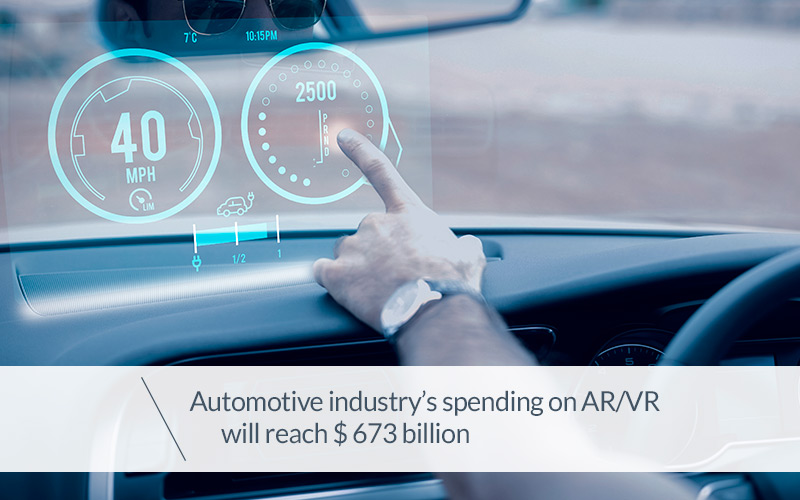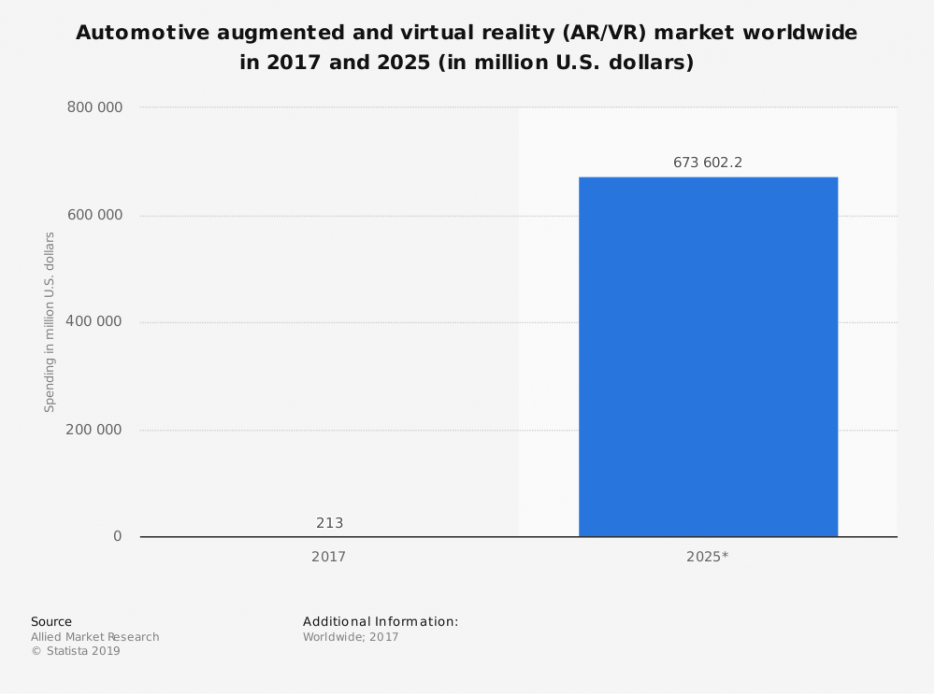
In 2017 investments in AR/VA systems (augmented reality and virtual reality) recorded in the automotive industry just about reached 213 million dollars.
Relatively tiny numbers, but which show a marked interest by the automotive sector in this technology, which will surely grow over the next few years.
According to forecasts in the ““Automotive AR and VR Market by Type (Augmented Reality (AR) and Virtual Reality (VR)) and Application (Research & Development, Manufacturing & Supply, Marketing & sales, Aftersales, Support Functions, and Product): Global Opportunity Analysis and Industry Forecast, 2018 - 2025” report, indeed, forecasts for expenditure by 2025 will which the respectable figure of $673,602 million dollars.
We are therefore looking at CAGR of 175.7% from 2018 to 2025.
The role of connectivity, IoT and 5G networks
The increase in investments in virtual and augmented reality in the automotive sector is influenced by technological advancements in the production of connected vehicles, the internet of things and 5G networks.
5G networks, for example, are essential for the use of VR viewers or augmented reality glasses, as they allow faster data transfer with far lower latency.
AR/VR tools require the Integration of these technologies so that they can be used in the automotive sector.
AV/RV in the automotive sector: possible uses
Over the past few years, we have seen the implementation of solutions based on augmented and virtual reality in various sectors: entertainment, medicine, safety and aviation, amongst others.
Within the automotive sector, they are implemented mostly in the design, assembly, repair and maintenance of vehicles.
In fact, the use of this technology allows designers to visualise, via for example holographic projections, the structure of a vehicle body, in order to improve efficiency, safety and longevity.
Furthermore, we shouldn’t undervalue the role they play in the optimisation of safety processes during the production chain.
By tracking the movements of human operators during the process, it is possible to reduce the risk of injuries or accidents, whilst substantially improving work conditions in the plant.
New AR/VR systems onboard vehicles
Several key players in the world automotive sector are making deals and partnerships with AV/RV technology developers to introduce new systems within the vehicles.
Sensors, GPS, video devices and network connections make it possible to give the driver a vast display of information, allowing a highly efficient overall view of things.
For example, foreseeing an obstacle in the road will be a reality.
However, all of the above has to take place via a user interface that is simple, clear, and which reduces distractions to a minimum whilst increasing safety and driver comfort.
Things that AV/RV can’t do won’t do
Numerous studies conducted to date have shown that people using the AV/RV tools tend to suffer headaches, eye tiredness and general lethargy, plus raised anxiety.
Separation from reality can provoke a number of impairments to the brain and the eyes, making this kind of technology both advantageous and dangerous.
For this very reason, the most part of investments at the moment is directed towards the research and development phases, in order to find solutions for the dangers foreseen.
Another huge limit, which currently inhibits development, is system dependence on internet connections, particularly 4G and 5G.
In fact, when connectivity is slow the systems tend to work incorrectly, and this is a big handicap for developing countries where the networks are not ready to take on these kinds of challenges.




